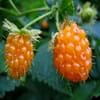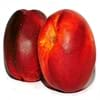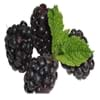Health Benefits
Arthritis prevention, Asthma treatment, Cancer prevention, Kidney stone treatment, Liver health
Good for diabetics, Improves well-being, Miraculin/miracle fruit makes sour things taste sweet
General Benefits
Anti oxidant properties, Boosts immune system, Cures cough, Eye care, Fights against infections, Helps in weight loss, Improves eye vision, Maintains healthy cholesterol level, Treatment of common cold
Has taste modifying effect
Skin Benefits
Anti-aging benefits, Brightens and lightens complexion, Reduces wrinkles, Treatment of dark spots
NA
Hair Benefits
Prevents hair loss, Protects hair, Regulates hair growth, Treatment of dandruff
NA
Allergy Symptoms
Abdominal pains, Breathing difficulty, Decrease in blood pressure, Diarrhea, Dizziness, Eczema, Hives, Lightheadedness, Nausea, Runny nose, Sneezing, Swelling of mouth, tongue or lips, Vomiting, Wheezing
Itching, Skin rash
Side Effects
Allergic reaction
Changes taste of food eaten after this fruit, Coagulation
Best Time to Eat
As a snack in the late afternoon, Eat the fresh ones, avoid mixing with any other foods, don't eat after meal., Morning time (before lunch), Strictly avoid empty stomach
As a snack in the late afternoon, Eat the fresh ones, avoid mixing with any other foods, don't eat after meal., Morning time (before lunch)
Protein to Carb Ratio
Not Available
Vitamin A (Retinol)
Not Available
Vitamin B1 (Thiamin)
Not Available
Vitamin B2 (Riboflavin)
Not Available
Vitamin B3 (Niacin)
Not Available
Vitamin B5 (Pantothenic Acid)
Not Available
Vitamin B6 (Pyridoxin)
Not Available
Vitamin B9 (Folic acid)
Not Available
Vitamin C (Ascorbic Acid)
Vitamin K (Phyllochinone)
Not Available
Lutein+Zeaxanthin
Not Available
Water Content
Not Available
Calories in Fresh Fruit with Peel
Not Available
Not Available
Calories in Fresh Fruit without Peel
Not Available
Calories in Frozen Form
Not Available
Not Available
Calories in Dried Form
Not Available
Calories in Canned Form
Not Available
Calories in Juice
Not Available
Calories in Jam
Not Available
Calories in Pie
Not Available
Type
Citrus, Tree fruit
Berry
Season
All seasons
Monsoon
Varieties
Duncan, Marsh and Oro Blanco
Gymnema Sylvestre and Thaumatococcus Daniellii
Inside Color
Creamy Yellow
Greyish-white
Origin
Barbados
West Africa
Soil Type
Loam, Well-drained
Well-drained
Climatic Conditions
Humid, Warm
Rainfall
Facts about
- February is known as National Grapefruit Month.
- It is called as state fruit of texas.
- No mechanical devices are used while picking grapefruits, they are always handpicked.
- The name 'Miracle' because of the magical experience you get after eating it.
- When you have lemon after eating this fruit, it tastes sweet as if it is added with sugar.
- It is also used as natural sweetener.
Other Countries
Argentina, India, Israel, Mexico, South Africa, Sudan, Thailand, Turkey, United States of America
NA
Top Importer
Europe
Not Available
Top Exporter
United States of America
United States of America
Botanical Name
Citrus paradisi
Synsepalum Dulcificum
Synonym
Not Available
Miracle Berry, Miraculous Berry and Sweet Berry
Subkingdom
Tracheobionta
Tracheobionta
Division
Magnoliophyta
NA
Subclass
Rosidae
Asteridae
Order
Sapindales
Ericales
Family
Rutaceae
Sapotaceae
Species
C. × paradisi
S. dulcificum
Generic Group
Citrus fruit
Not Available
Difference Between White Grapefruit and Miracle fruit
We might think that White Grapefruit and Miracle fruit are similar with respect to nutritional value and health benefits. But the nutrient content of both fruits is different. White Grapefruit and Miracle fruit Facts such as their taste, shape, color, and size are also distinct. The difference between White Grapefruit and Miracle fruit is explained here.
The amount of calories in 100 gm of fresh White Grapefruit and Miracle fruit with peel is Not Available and Not Available and the amount of calories without peel is 33.00 kcal and Not Available respectively. Thus, White Grapefruit and Miracle fruit belong to Low Calorie Fruits and Low Calorie Fruits category.These fruits might or might not differ with respect to their scientific classification. The order of White Grapefruit and Miracle fruit is Sapindales and Ericales respectively. White Grapefruit belongs to Rutaceae family and Miracle fruit belongs to Sapotaceae family. White Grapefruit belongs to Citrus genus of C. × paradisi species and Miracle fruit belongs to Synsepalum genus of S. dulcificum species. Beings plants, both fruits belong to Plantae Kingdom.









